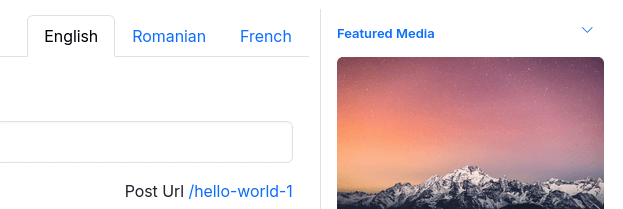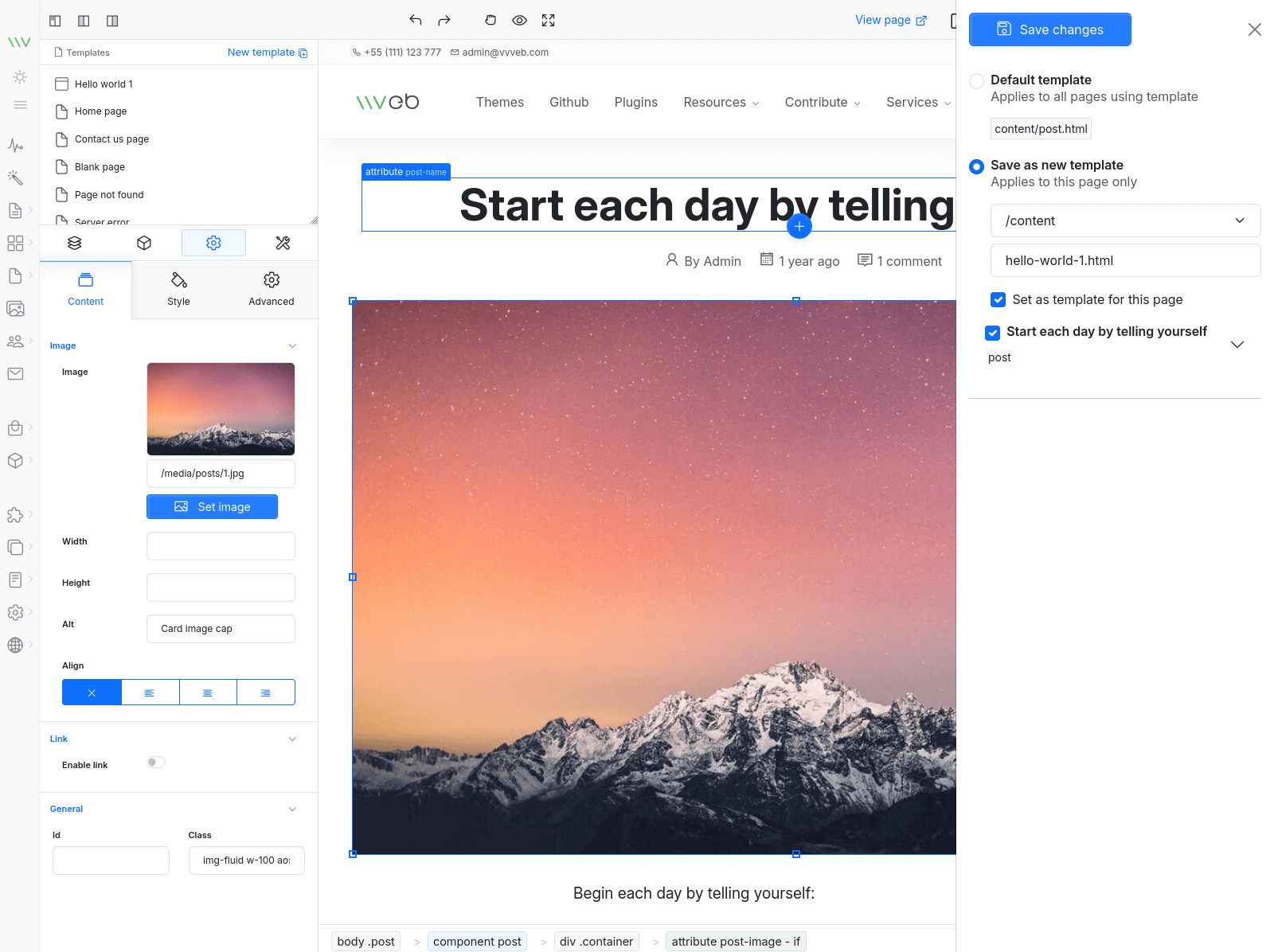
Slug
The slug is unique for the page and is used to generated the url that points to the page. The slug will be generated automatically from the name but you can change it if you wish. It should not contain punctuation marks and spaces, use - or _ to separate words.
Content
Content of the post this will be visible on blog item page.
Revisions
When making changes to post description a revision is created to help restore the content later.
All saved revisions can be viewed in a dropdown by clicking the revisions button.

Multi language
For all active languages a tab is displayed in the top right side where you can choose the language to enter the product name, description, slug and seo data.

Open in page editor
With this action you can load the post page in the page builder for post specific design customizations.
You can save the changes to a custom template with the Save as new template option that will apply the changes only for this post.
Choosing default template will apply the changes to all posts.

Excerpt
This will show on posts lists on blog page and in posts component instead of full content.
Meta description and Meta keywors
This content is used for search engines.
Featured media
Visible in blog post page as header, in posts lists on blog page and in posts component.
Page options
Publish date
Publish date is used to order posts, by default the most recents are shown first, publish date is also visible on posts lists and blog page.
Status
Only with publish the page is visible on the frontend.
Categories
Categories are used to group posts in a tree hierarchy.
You can add new categories from the categories page
Tags
Tags are used to group posts by common topics.
You can enter new tags that will be created automatically or choose an existing one from the autocomplete input.
Template
If you wish your page to have a different layout you can select a different theme template, for example for contact page you can use a template with a contact form.